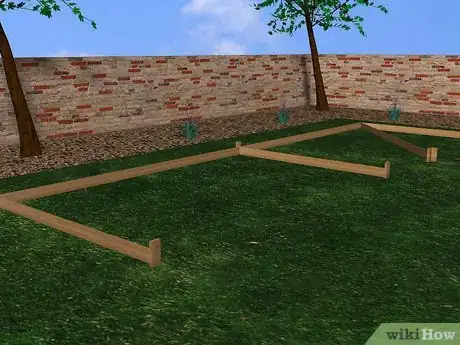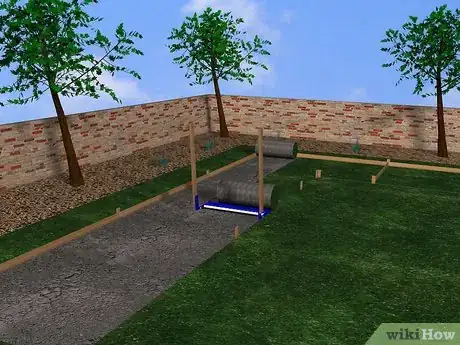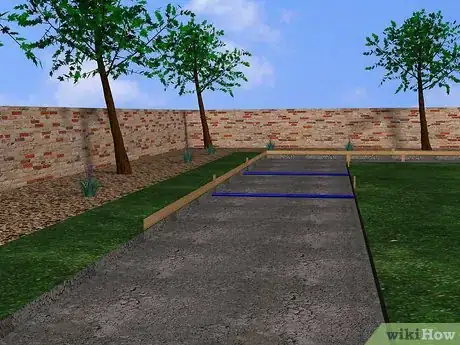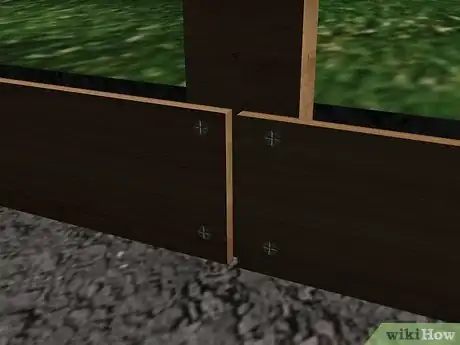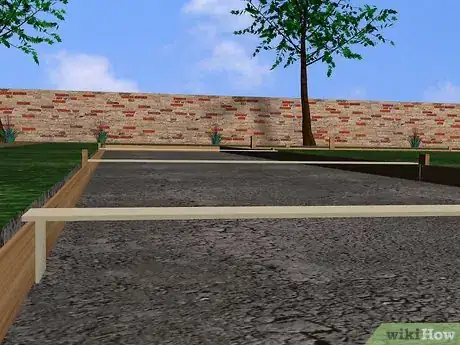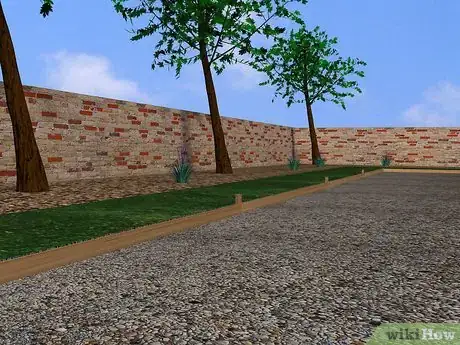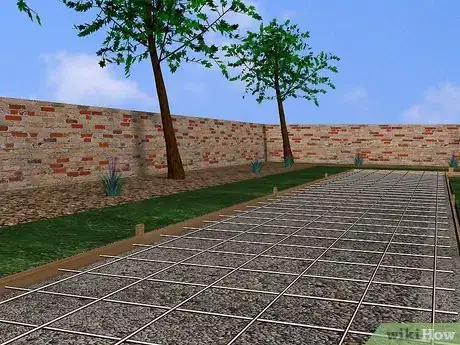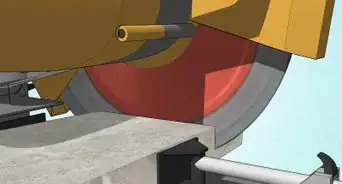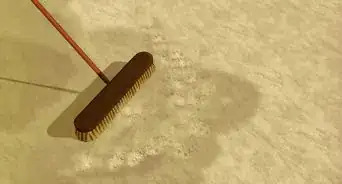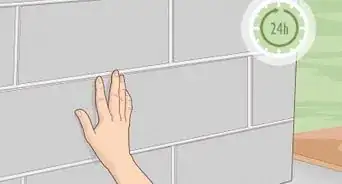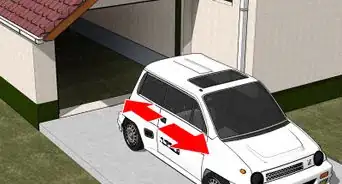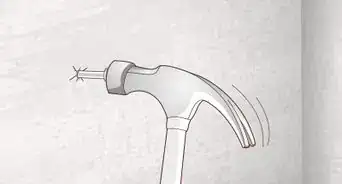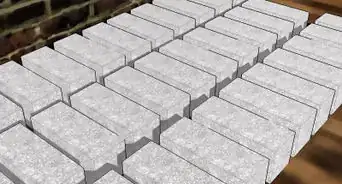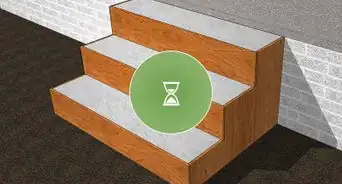X
wikiHow is a “wiki,” similar to Wikipedia, which means that many of our articles are co-written by multiple authors. To create this article, 13 people, some anonymous, worked to edit and improve it over time.
This article has been viewed 269,944 times.
Learn more...
Building curved forms for a sidewalk or other concrete project is not much harder than building straight forms, and the results are definitely more interesting.
Steps
-
1Use 12-inch (30.5 cm) hardboard siding (sometimes called Masonite) ripped down to 6-inch (15 cm) strips in 16-ft (4.8 meter) lengths (Full-service lumberyards and home centers carry all this forming material). Flex it to the desired shape of your sidewalk and stake it down. Use marking paint to mark the ground next to the form.[1]
-
2Slice off sod with a sod cutter, then dig out the rest of the sidewalk path to a depth of 6 inch (15 cm). Dig out about 3 inch (7.6 cm) wider on both sides of the paint marks to leave room for forms. Set aside some topsoil to fill against the forms and sidewalk later.[2]Advertisement
-
3Start thinking about drainage issues at this point. If water tends to collect in the yard in spots, you may want to elevate the walk in those areas, so don’t dig as deeply there. Long, flat areas should have one side of the sidewalk lower so water can drain off the side. In most cases, make the top of the finished walk even with the (freshly cut) top of the grass for easy mowing and a neat, clean appearance. The bottom of the trench will be about 6 inch (15 cm) below grade to allow for 4 in. of gravel below the 4-in. thick slab of concrete.[3]
-
4Pound in two stakes about 1 ft (30.5 cm) from the ends of the form positions. Screw the forms to the inside of the stakes with a couple of 1-1/4 inch (2.5 cm - 3.5 cm) drywall screws. Bend the forms to make smooth curves, anchoring them with more stakes every 3 ft. Keep the tops of the forms about 1 inch (2.5cm) above the cut grass height for easy mowing and a nice appearance.
-
5Space and level in the opposite form sides using a homemade gauge board—just a 1x4 that’s a few inches longer than the width of the sidewalk. Screw short blocks onto the bottom spaced the same width as the sidewalk. Use this gauge board to position the forms and stakes to keep a consistent width the entire length of the sidewalk. Rest a 4-ft. (1.22 meters) level on top of the gauge board to keep forms level from side to side. For better drainage in long, level areas, drop this side about 1 in.
-
6Pack the underlying soil with a plate compactor (rent one). It’s important to uniformly pack the entire base (including the sides near the forms).[4]
-
7For a long-lasting sidewalk, plan on a base of gravel under 4 inch of concrete.[5] If you live in a frost-free climate with a natural sand base with good drainage, you can pour right on top of the sand. But other soil types will expand and contract with weather conditions and can crack overlying concrete. Gravel protects concrete from these shifting conditions. Spread gravel 4 in. deep between the forms. Pack dirt against the outside and gravel against the inside of forms to add support when pouring and to achieve smooth curves. It’s not necessary to compact the gravel.
-
8Steel mesh with expansion strips prevents heaving, cracking and buckling in cold climates.[6] Cut off the stakes flush with the tops of the forms. Park a helper on the end of the reinforcing mesh for ballast and unroll the mesh, holding it down with your feet. Cut it to length with a pair of bolt cutters. Flip the mesh over and pull one end toward the other to back-bend it slightly to eliminate the natural curl. Cut the edges of the mesh at least 3 inches (7.6 cm) back from the forms. Overlap mesh layers at least 6 inch (15 cm) and tie them together.
-
9Hold the mesh 2 inch above the gravel with small globs of concrete or pieces of patio brick while pouring the sidewalk. Pour a few feet of concrete, heaping it slightly higher than the forms. Don’t shovel concrete; pull it back or push it forward with a steel rake.[7]
Advertisement
References
- ↑ https://www.familyhandyman.com/masonry/pouring-concrete/tips-to-build-a-concrete-walkway/
- ↑ https://www.familyhandyman.com/masonry/pouring-concrete/how-to-pour-a-concrete-sidewalk/
- ↑ https://www.familyhandyman.com/masonry/pouring-concrete/how-to-pour-a-concrete-sidewalk/
- ↑ https://extremehowto.com/plate-compactor-basics-for-the-diyer/
- ↑ https://www.familyhandyman.com/masonry/pouring-concrete/tips-to-build-a-concrete-walkway/
- ↑ http://www.bnproducts.com/blog/what-is-the-importance-of-a-reinforced-concrete-slab/
- ↑ https://www.familyhandyman.com/masonry/pouring-concrete/tips-for-how-to-pour-a-concrete-slab-successfully/
- ↑ http://call811.com/
About This Article
Advertisement
